Astronauts Activities During EV-1. Here Astronaut Robert Stewart During Manned Maneuvering Unit (MMU)

Astronauts activities during EV-1. Here Astronaut Robert Stewart during Manned Maneuvering Unit (MMU) Exercise untethered above the Earth.[4209 x 4209] - For more images of the cosmos Click Here
More Posts from Stars-and-shitt-blog and Others
me every morning: the search for sock
What's your opinion of the Multiverse Theory? Conceptually, it's simultaneously terrifying and glorious in my opinion. On another note, do you watch How the Universe Works?
It is a surprising thing, though I believe we are far from knowing it scientifically. For lack of techniques or technology to prove the existence or not of the multiverse, this creates two sides of the same coin, on the one hand we can sitar science and the other on fantasy, spiritism, or science fiction. For example, string theory says that we would have more dimensions in which we already know. But honestly… as my blog is related to science, I think it best I do not present my opinion here… I just think skepticism can blind you sometimes. And on the second question, yes, I’ve already watched. Sorry if I did not answer your question in the right way.
(In a cheerful cowboy voice while slapping my knee) well beam me up Scotty!
read 22:06
What if aliens have already received our attempt at contact, but decided to not respond.

meanwhile, in Facebook’s PR department
Fake geek boys don’t know science fiction was invented by a woman
Why I need feminism
*driving home*
Me: Let’s see what’s on the radio.
DJ: “It’s a tragic day for all men today—Leonard Nimoy died. Most boys had a Star Trek phase growing up. You girls probably have trouble telling the difference between Star Wars and Star Trek, but trust me, it’s a big deal that he’s gone.”
Me: …
Me: Seriously? What year is this?
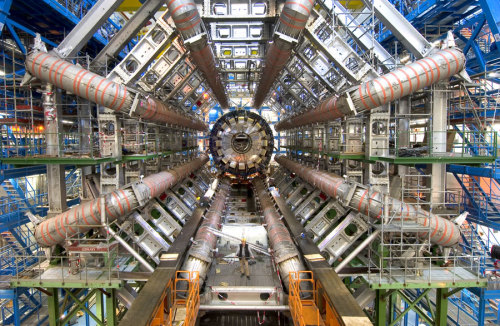
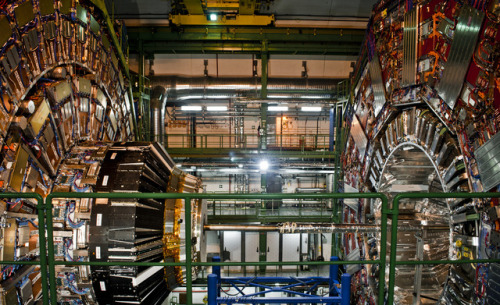
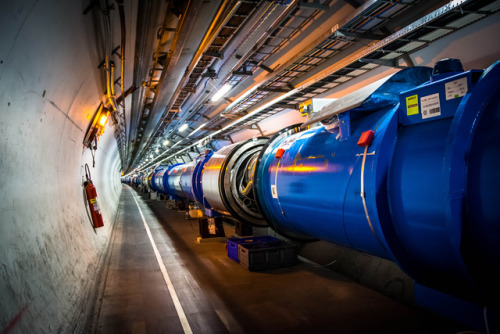
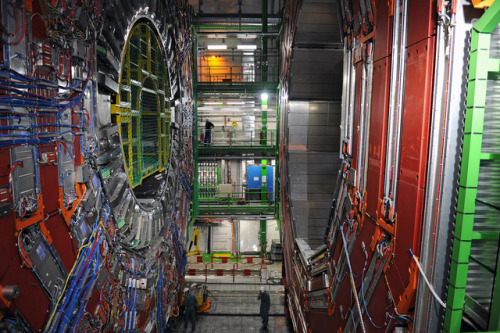
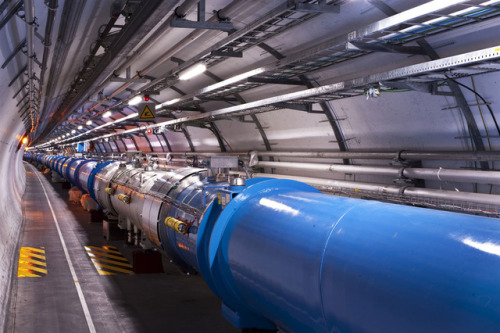

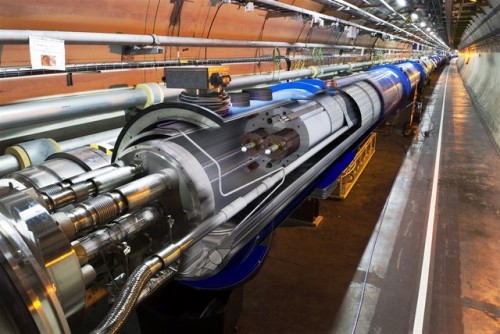
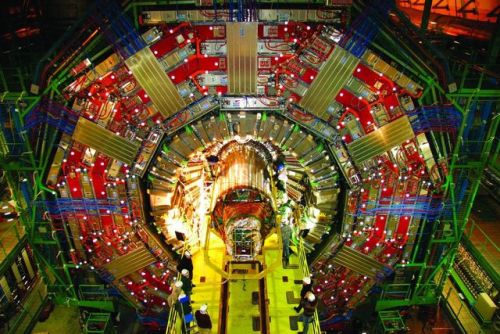

The Large Hadron Collider
The Large Hadron Collider (LHC) is the world’s largest and most powerful particle collider, the most complex experimental facility ever built, and the largest single machine in the world. It was built by the European Organization for Nuclear Research (CERN) between 1998 and 2008 in collaboration with over 10,000 scientists and engineers from over 100 countries, as well as hundreds of universities and laboratories. It lies in a tunnel 27 kilometres (17 mi) in circumference, as deep as 175 metres (574 ft) beneath the France–Switzerland border near Geneva.
The aim of the LHC is to allow physicists to test the predictions of different theories of particle physics, including measuring the properties of the Higgs boson and searching for the large family of new particles predicted by supersymmetric theories, as well as other unsolved questions of physics.
All the controls for the accelerator, its services and technical infrastructure are housed under one roof at the CERN Control Centre. From here, the beams inside the LHC are made to collide at four locations around the accelerator ring, corresponding to the positions of four particle detectors – ATLAS, CMS, ALICE and LHCb.
Image credit: CERN, FermiLab (Vlad Savov, Julien Nyczak, Maximilien Brice).
source
Click here to learn more
What’s Up - February 2018
What’s Up For February?

This month, in honor of Valentine’s Day, we’ll focus on celestial star pairs and constellation couples.

Let’s look at some celestial pairs!

The constellations Perseus and Andromeda are easy to see high overhead this month.

According to lore, the warrior Perseus spotted a beautiful woman–Andromeda–chained to a seaside rock. After battling a sea serpent, he rescued her.

As a reward, her parents Cepheus and Cassiopeia allowed Perseus to marry Andromeda.

The great hunter Orion fell in love with seven sisters, the Pleiades, and pursued them for a long time. Eventually Zeus turned both Orion and the Pleiades into stars.

Orion is easy to find. Draw an imaginary line through his belt stars to the Pleiades, and watch him chase them across the sky forever.

A pair of star clusters is visible on February nights. The Perseus Double Cluster is high in the sky near Andromeda’s parents Cepheus and Cassiopeia.

Through binoculars you can see dozens of stars in each cluster. Actually, there are more than 300 blue-white supergiant stars in each of the clusters.

There are some colorful star pairs, some visible just by looking up and some requiring a telescope. Gemini’s twins, the brothers Pollux and Castor, are easy to see without aid.

Orion’s westernmost, or right, knee, Rigel, has a faint companion. The companion, Rigel B, is 500 times fainter than the super-giant Rigel and is visible only with a telescope.

Orion’s westernmost belt star, Mintaka, has a pretty companion. You’ll need a telescope.

Finally, the moon pairs up with the Pleiades on the 22nd and with Pollux and Castor on the 26th.
Watch the full What’s Up for February Video:
There are so many sights to see in the sky. To stay informed, subscribe to our What’s Up video series on Facebook.
Make sure to follow us on Tumblr for your regular dose of space: http://nasa.tumblr.com.

that’s just the actual dialogue from the film, right

-
 wataru85 reblogged this · 5 years ago
wataru85 reblogged this · 5 years ago -
 riodejapoon-blog reblogged this · 6 years ago
riodejapoon-blog reblogged this · 6 years ago -
 msykxxx liked this · 6 years ago
msykxxx liked this · 6 years ago -
 jayfyne reblogged this · 6 years ago
jayfyne reblogged this · 6 years ago -
 godave74 reblogged this · 6 years ago
godave74 reblogged this · 6 years ago -
 osiawaseni liked this · 6 years ago
osiawaseni liked this · 6 years ago -
 eientowa reblogged this · 7 years ago
eientowa reblogged this · 7 years ago -
 ysbranch reblogged this · 7 years ago
ysbranch reblogged this · 7 years ago -
 shimotsukiitsuka reblogged this · 7 years ago
shimotsukiitsuka reblogged this · 7 years ago -
 jaehyungslay liked this · 7 years ago
jaehyungslay liked this · 7 years ago -
 skyel-top3 reblogged this · 7 years ago
skyel-top3 reblogged this · 7 years ago -
 drycleaningonlyone reblogged this · 7 years ago
drycleaningonlyone reblogged this · 7 years ago -
 agi-dyne liked this · 7 years ago
agi-dyne liked this · 7 years ago -
 takeuchiitsuka liked this · 7 years ago
takeuchiitsuka liked this · 7 years ago -
 querukun-blog liked this · 7 years ago
querukun-blog liked this · 7 years ago -
 kukri11-87 liked this · 7 years ago
kukri11-87 liked this · 7 years ago -
 soyboy-blog liked this · 7 years ago
soyboy-blog liked this · 7 years ago -
 hitoshimurata liked this · 7 years ago
hitoshimurata liked this · 7 years ago -
 krkr45 reblogged this · 7 years ago
krkr45 reblogged this · 7 years ago -
 kumanokokodomo reblogged this · 7 years ago
kumanokokodomo reblogged this · 7 years ago -
 oxo1wanwan liked this · 7 years ago
oxo1wanwan liked this · 7 years ago -
 mischiefmanaged15 liked this · 7 years ago
mischiefmanaged15 liked this · 7 years ago -
 yusososo reblogged this · 7 years ago
yusososo reblogged this · 7 years ago -
 konomon reblogged this · 7 years ago
konomon reblogged this · 7 years ago -
 kazzxz reblogged this · 7 years ago
kazzxz reblogged this · 7 years ago -
 jdeppforever-blog1 liked this · 7 years ago
jdeppforever-blog1 liked this · 7 years ago -
 fukuku3 reblogged this · 7 years ago
fukuku3 reblogged this · 7 years ago -
 youroceana liked this · 7 years ago
youroceana liked this · 7 years ago -
 aleynaonll-blog liked this · 7 years ago
aleynaonll-blog liked this · 7 years ago -
 ourwisecollectioncomputer reblogged this · 7 years ago
ourwisecollectioncomputer reblogged this · 7 years ago -
 onlinelovewitchsworld reblogged this · 7 years ago
onlinelovewitchsworld reblogged this · 7 years ago -
 onlinelovewitchsworld liked this · 7 years ago
onlinelovewitchsworld liked this · 7 years ago -
 o-x-y-s reblogged this · 7 years ago
o-x-y-s reblogged this · 7 years ago -
 cygnetmix reblogged this · 7 years ago
cygnetmix reblogged this · 7 years ago -
 mtblike reblogged this · 7 years ago
mtblike reblogged this · 7 years ago -
 canadianabroadvery liked this · 7 years ago
canadianabroadvery liked this · 7 years ago -
 ldndragon reblogged this · 7 years ago
ldndragon reblogged this · 7 years ago -
 ldndragon liked this · 7 years ago
ldndragon liked this · 7 years ago -
 makina-16 liked this · 7 years ago
makina-16 liked this · 7 years ago -
 zeroattribute reblogged this · 7 years ago
zeroattribute reblogged this · 7 years ago
I enjoy telescopes too much for my own good. (PS. my header is fireworks because nothing else fits yet)
38 posts